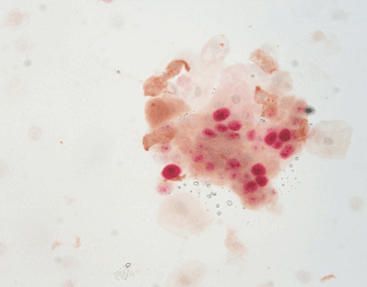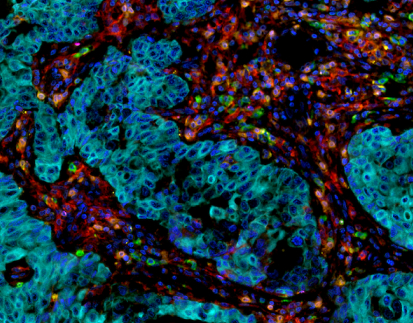Key Benefits of Multiplex Immunohistochemical Analysis in Research

By admin
Understanding Multiplex Immunohistochemical (MIHC) Technologies
Basics and Principles of MIHC
The main advantage of the Multiplex Immunohistochemical is an advanced technology that allows assessing the same tissue section with the usage of multiple biomarkers simultaneously. This technology uses a variety of antibodies attached to different chromogens and thus enables the researchers to evaluate several types of protein expressions simultaneously. More importantly, MIHC allows the preservation of the biomarkers’ spatial context within the tissue structure. These advantages not only improve the accuracy of assessing pathologists but also benefit the diagnostic pathology.
Introduction to Celnovte’s MIHC Techniques
Try rephrasing your text as follows. Celnovte is a company on the cutting edge of innovations in MIHC technologies. Celnovte provides state-of-the-art products that meet the needs of modern research and clinical diagnostics. The main products are the fully automated immunohistochemistry staining machines that automatize all the technological processes of staining. The procedure is done in 2.5 hour, and the machine is able to process 60 tasks. Moreover, this company offers other products for MIHC, including more than 460 primary antibodies and immunohistochemistry quality control products. Moreover, this company develops such advanced technologies for MIHC as chromogenic in situ hybridization ISH and multi-color immunohistochemistry. Thus, this company can provide a wide range of devices and substances that can be used in both research and clinical practice.
Cost and Time Efficiency
Reduction in Experiment Costs
One of the most important advantages of using MIHC methods is the significant lowering of the cost of experiments. This is achieved due to the possibility of conducting the evaluation of numerous biomarkers at once, allowing researchers to streamline their resource allocation practices and decrease the necessity for repeated tests. Overall, with samples and reagents used more efficiently, the timeline for the discovery of new facts is accelerated, and the cost of experiments is significantly lower for laboratory owners.
Advancements in Diagnostics
Early Disease Detection
The innovative nature of MIHC technologies arises from the fact that they can accurately detect diseases at an early stage. This means that pathologists can more accurately locate the cells that are presenting a pathological change and characterize the change with higher precision. Celnovte’s new methods make it possible to analyze several target proteins simultaneously, which is particularly useful in identifying cancer biomarkers. Early detection of these diseases improves patient outcomes through optimal medical intervention and increased patient selection for that intervention. Moreover, powerful visualization technologies and correlated staining results allow researchers to uncover unique facts about the specific pathology of diseases.
Personalized Medicine Applications
In the domain of personalized medicine, MIHC is an invaluable approach that can be used to custom-tailor therapeutic strategies for patients while minimizing the number of drugs with which they are treated. Screening multiple biomarkers on one slide enables the clinician to appreciate the heterogeneity of the tumor as well as select from the available therapies that could target different markers while measuring the targets that each patient has. The wide range of products in Celnovte’s product portfolio, such as antibodies for the critical biomarkers p16 and Ki-67, also allows the clinician to gain a complete picture of the patient. The decision-making process of a plan with enough target information is greatly facilitated in the data-rich environment, helping to push personalized medicine tailored to the patient’s disease process.
In conclusion, it should be reiterated that Celnovte’s dedication to its Multiplex Immunohistochemical analysis and striving to enhance it through modern technologies is commendable as it optimizes both the research and the clinical diagnostics domains. Furthermore, the company’s commitment to affordable solutions and the technology’s side effects, which involve using the solution for diagnosis as well as direct medical use, further supports the idea that it is a leader in the field of IHC applications.
Versatile Applications of MIHC
Cancer Research
Insights into Tumor Microenvironment
Multiplex Immunohistochemical analysis is crucial in cancer research because it helps reveal all the secrets of the tumor microenvironment. Being able to observe several proteins at the same time, researchers realize how diverse and complicated interactions between numerous cell types, the extracellular matrix, and different signaling pathways really are. In this way, it is possible to analyze the relationships in depth and understand what active areas must be focused on further development. All advanced MIHC solutions developed by Celnovte make such investigations more detailed, thus, allowing us to realize the full heterogeneity of tumors and better predict their responses to different treatments.
Pathway Mapping
The employment of MIHC in cancer research considerably contributes to pathway mapping efforts. By observing clusters of markers that co-express within particular cellular pathways, researchers may duly outline the signally pathways responsible for tumor management and response to therapy. As a result, it allows modern scientists to identify new biomarkers serving the role in oncogenesis or tumor survival. Additionally, with the high-throughput feature of Celnovte’s systems, the rates of such analyses are increased, providing researchers with rapid and dependable data crucial for further detailed studies and clinical applications.
Neuroscience Research
Understanding Neural Pathways and Disorders
Within the domain of neuroscience, MIHC methodology is transforming research into neural pathways and enabling better comprehension of advanced disorders and diseases. This is decidedly so based on the evaluation of not one but several neuronal markers, allowing for a better interpretation of input or interaction between various sections of the brain. In such a way, our understanding of such neurological diseases as Alzheimer’s or Parkinson’s can be enhanced. The details concerning the placement and specific input on different neuronal populations of the nervous system are vital for developing novel medical interventions. Celnovte’s cutting-edge products play a significant role in providing neuroscientists with such tools.
Identifying Specific Neuronal Markers
By conducting MIHC analysis, scientists can define neuronal markers that are unique for certain cell types and their conditions in the nervous system. Not only studies related to neuronal development but also degeneration and pathology will benefit from this capacity. Due to Celnovte’s rich toolkit of antibodies, it will be possible to examine the expression of markers in a more accurate manner, with defined patterns indicating the cell, accompanied by further explanations of the mechanisms inside to reflect the pathways specific for varied neurological conditions. Also, not only the basic neuroscience but the development of the targeted treatment regarding complex neurological diseases will be influenced by highly specific data produced by MIHC analysis.
Methodology and Protocols in MIHC
Protocol Standardization with Celnovte
It is important to note that the standardization of protocols in MIHC is crucial to guarantee reproducible and reliable results. By providing explicit guidance and optimized solutions for each laboratory and their technologies, Celnovte ensures that the integration of this method will be smooth and seamless. Protocols developed in this way allow the maintenance of consistency across samples, staining procedures, and images produced, thus freeing researchers to focus on data rather than troubleshooting. Training and support also ensure that a laboratory will adopt only the best approaches, and the obtained results will be validated and of high quality.
Troubleshooting Common Issues
Although MIHC provides a range of benefits, there are multiple challenges most researchers face when dealing with multiplex staining. Accordingly, the most common issues include background staining, uneven loading of samples, and too low signal intensity. As a developer of MIHC technologies, Celnovte also offers a range of effective strategies to help the target audience face the identified challenges. For example, appropriate antibody concentrations, as well as increased or, conversely, decreased incubation periods, could be adopted. In addition, the strategy of developing the most robust protocol possible is implemented, leading to the increased quality of performance. The prompt assistance offered by Celnovte has allowed the target audience to face the given challenge within a short amount of time.
In conclusion, the wide range of applications of Multiplex Immunohistochemical analysis described above, in the context of both cancer and neuroscience research, clearly show the irreplaceable nature of this technology. Celnovte’s dedication to ensuring that customers have access to high-quality MIHC solutions generates a culture of innovation among researchers that allows for the continuous discovery of crucial therapeutic targets and mechanisms of action in various diseases. In the future, as the paradigm of biomedicine evolves and we continue to deepen our understanding of the processes occurring within tissues, MIHC will only continue to be an incredibly important resource for studying versatile cellular interactions.
RELATED PRODUCTS









